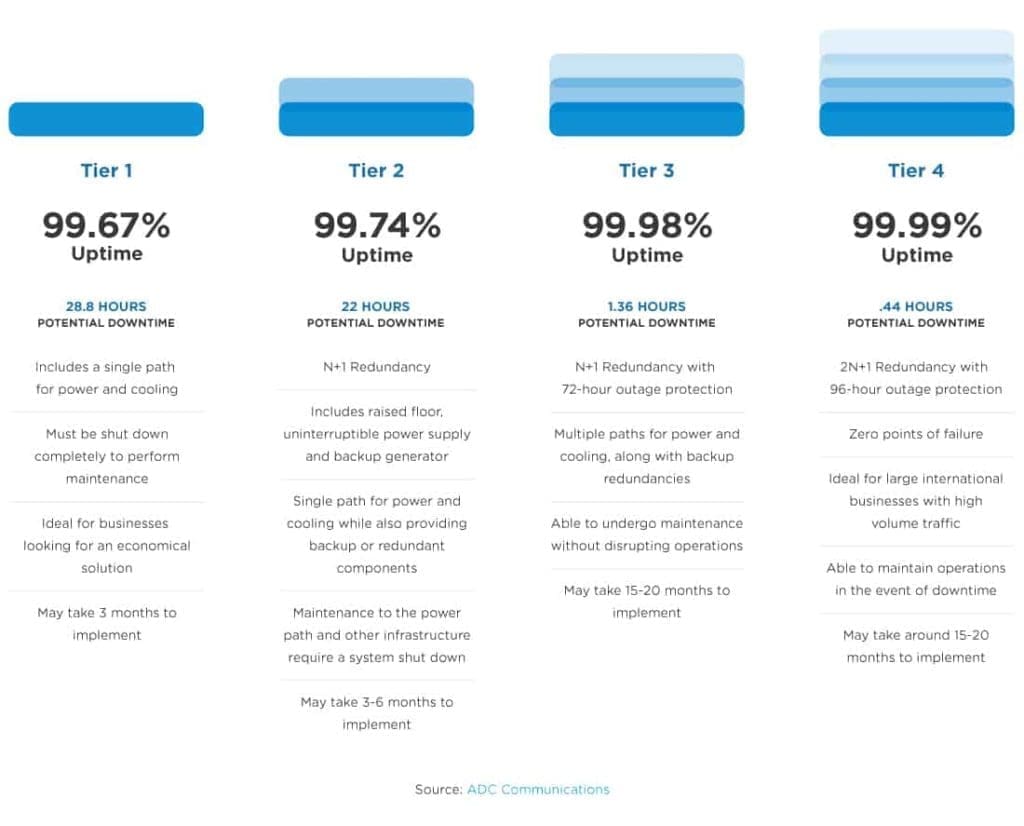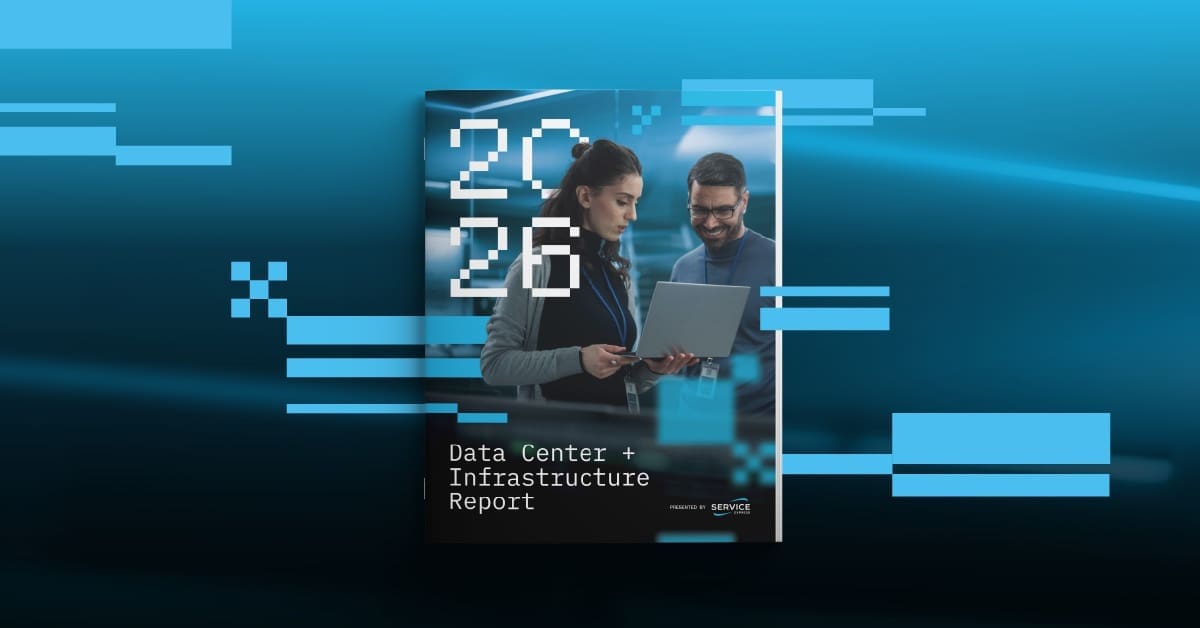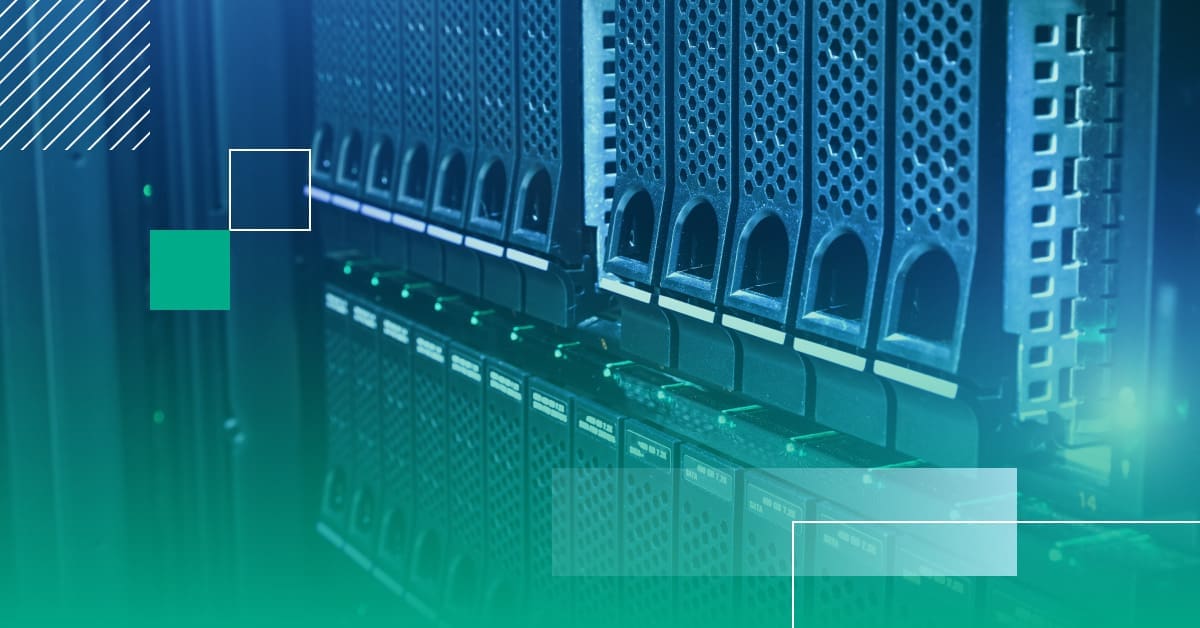Understanding data center tiers and types helps IT teams differentiate between the productivity, uptime, construction and design offered by each level. The data center tier classification system can be valuable for companies when analyzing the best specifications to align with business and reliability goals.
The four data center types reflect varying specifications related to performance, redundancy, power sources, etc. With help from the tier classification system, companies can customize IT infrastructure to fit unique industry and compliance needs.
Key takeaways:
What are data center tiers?
The Uptime Institute established the tier classification system over 25 years ago to create transparency and consistent data center standards. Using the tier guidelines, IT teams can select the relevant performance criteria for their data center infrastructure.
Even if you aren’t seeking a certified tier level, it can be helpful to reference the standards as you consider how to structure your IT infrastructure to meet performance, redundancy and compliance requirements.
What are the differences in data center tier levels?
The main differences in each data center tier are:
- Availability
- Cost
- Efficiency
- Implementation time
- Paths for power
- Redundancy
- Security
- Sustainability
- Uptime
It’s up to the IT specialist to determine their preferred tier standard and which customizations they need to meet business objectives. As the level increases, so do the costs and uptime.

The new Tier 5® Platinum standard
In 2017, colocation and cloud service provider, Switch, revealed the first-ever Tier 5 data center. This advanced data center features heightened redundancy, long-term power capabilities, zero roof penetrations, physical and network security, 100% renewable energy use and more. To date, the Uptime Institute doesn’t acknowledge Tier 5 data centers in their certification, but the original creators of the standards support the newest tier level.
Industry experts have identified significant threats that affect colocation data centers, including water damage, earthquakes, insufficient security and more. While other data center rating systems don’t consider these elements, Switch created the Tier 5 standard to “reduce the lack of transparency and enhance the reliability of data center rating standards.” The new standard provides their customers increased service and security.
Why are data center tiers important?
The tier classification system reinforces benchmarks to better align your company’s fiscal and performance goals with new infrastructure investments. In many cases, this is viewed as the primary benefit. Tiers can be valuable for:

Productivity and uptime
When customers rely on software for their business operations, they want reassurance that your data center is redundant. This is especially important for companies that provide Software as a Service (SaaS).

Credibility and compliance
A data center tier certification proves your organization’s infrastructure is well-equipped to achieve company goals. Each tier is held to rigorous standards, and achieving tier certification puts your data center under review and proves compliance — reassuring stakeholders that their investment is not at risk and that your facility meets their specifications.

Construction and design
A lot goes into designing a data center, including establishing server locations, power sources, safety measures, etc. When building a new data center or updating an existing one, you can use the tier classification system as a guideline for what elements to include in your system.
What’s the right data center tier level for your organization?
There isn’t one right answer when creating the data center that best serves your business. The process requires a large investment of time, strategy, skills and funds. However, understanding data center tiers and types can help you ask your team, business leaders and vendor partners the right questions.
Topics:



